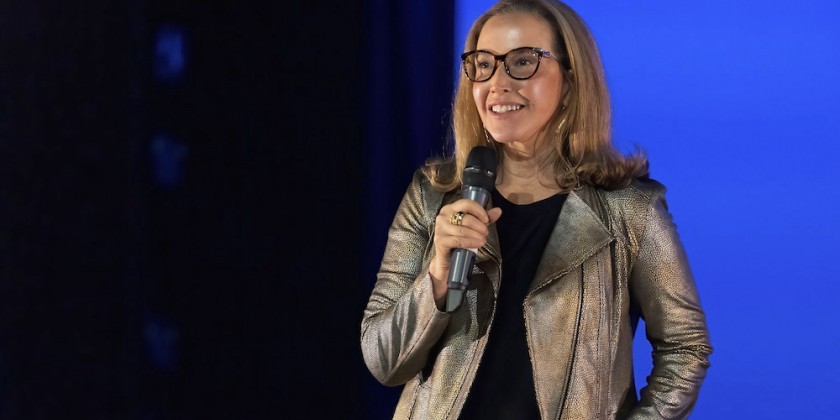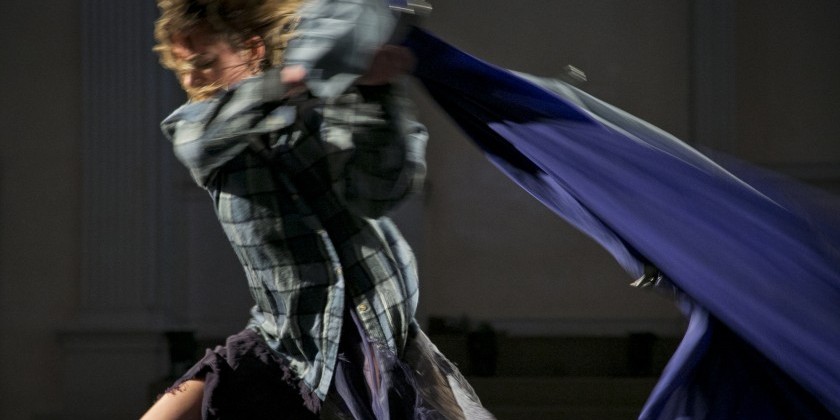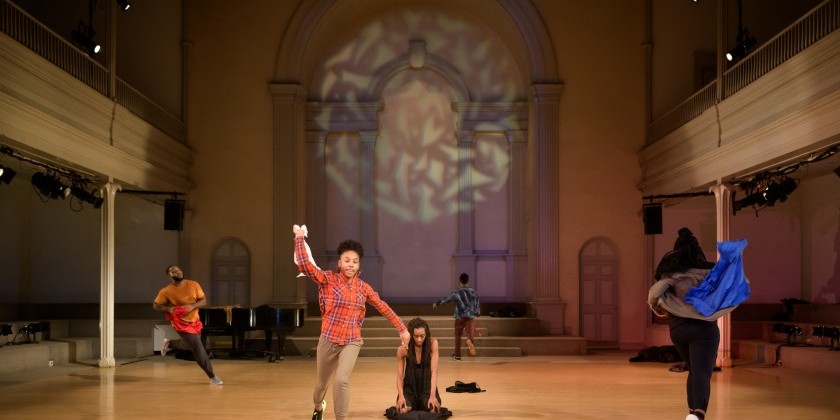Dance Up Close to niv Acosta

Dance Up Close to niv Acosta
i shot denzel
Choreographer: niv Acosta
Performers and musicians: niv Acosta, Yessenia Acosta, Lee Free, Amy Gall, Lydia Berg-Hammond, Caitlin Marz, Jo Pang, Julia Read, Aleksei Wagner, Gary Zema
Premiering at New York Live Arts
January 30-February 1, 2014
For ticket information, click on the New York Live Arts website
i shot denzel is the sixth installment of niv Acosta’s three-year project, the "denzel series.” The queer and transgendered artist grew up in New York City studying modern dance at the Martha Graham School and Voguing at holiday parties and balls. Both idioms inform his work today in addition to his personal relationships -- to the extent that Acosta casted his past partner, younger brother and mother in various episodes of the “denzel series.”
Origins of i shot denzel
The Dance Enthusiast spoke with Acosta during one of his rehearsals in early January. Eight musicians warmed up their instruments while Acosta’s lead singer and mother, Yessenia, greeted each musician individually with niv’s younger sister, Ana, in tow. The gregarious and diverse gaggle of artists had a genuine warmth and familial bond as they congregated in an unexpected rehearsal space -- Acosta’s mother’s church in Chelsea. Despite the relaxed atmosphere, when Acosta said it is time to work, they diligently followed their director’s lead.
niv Acosta on Collaborating With His Mother
“There’s something about Denzel’s celebrity that I’m emphasizing in the title. It’s his presence or lack thereof that I either lean into or back away from in the work,” says Acosta taking time to discuss i shot denzel before he listens to the music rehearsal, warms up and brainstorms with his costume designer.
“The title also refers to my monologue in the piece, which is an open letter from a character who is both Denzel and me. It’s semi-biographical, and he is relinquishing the power of Denzel and celebrating life at the same time.”
music in niv Acosta's work
Acosta’s investigation of duality doesn’t stop in the “denzel series.” Creating the term ‘impossible bodies’, the artist describes his feelings of not belonging or fitting into a particular structure. Acosta says that many of his peers and loved ones feel similarly. To combat this, they devise environments and situations that allow them to feel safe and comfortable to exist and explore freely while accepting their ‘impossible bodies’.
“The term comes from a feeling that there is a standard, but that being ‘impossible’ isn’t a bad thing nor is it a constant,” says Acosta. “We can decide what is possible and not. How do we surpass impossibility without comprising ourselves?”
As Acosta jokes with his fellow collaborators and dotes on his sister, it is clear that he has found that sweet spot; carving out an inviting place in which he and his fellow ‘impossible bodies’ can take risks and be themselves.












